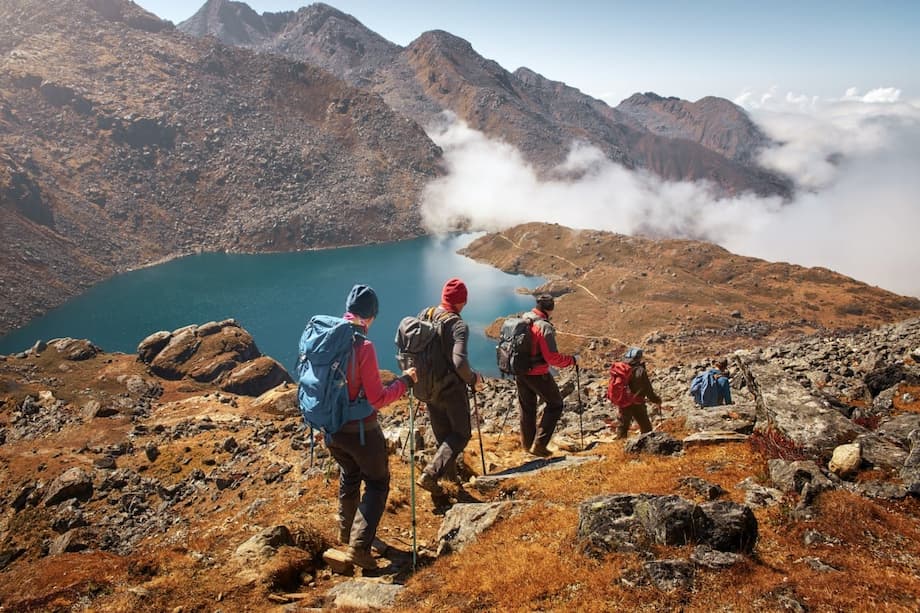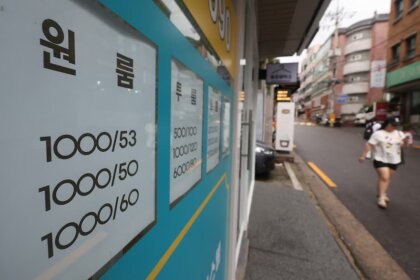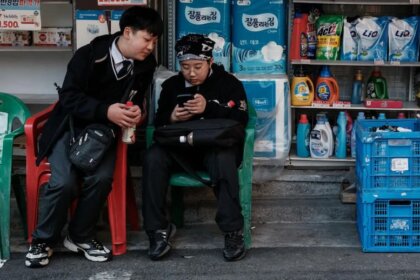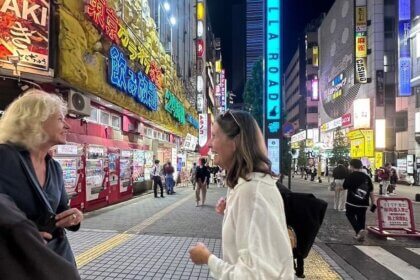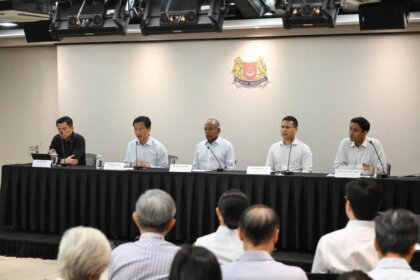What is changing and when
Nepal is introducing a nationwide digital tracking requirement for foreign visitors, centered on a new Department of Immigration platform called NepaliPort Traveller and the Foreign National Tracking Module. Starting 17 September 2025, foreign arrivals will begin registering their stays and movements through a government mobile application, with each interaction at participating service providers recorded via QR code scans. According to the Department and reporting in the Kathmandu Post, the first phase begins in five star hotels in Kathmandu. From 17 November, the program expands to airlines, travel and tour firms, money exchange outlets, and then to hotels and guesthouses across the country. The South China Morning Post also reported that the app is intended to be mandatory and is framed by officials as a balance of safety, immigration control, and tourism development.
The system applies to all foreign nationals, including Indian citizens entering by land who normally do not need a visa. Visitors will register with passport and visa details on the app, then scan a provider’s QR code each time they check in to a hotel, use an airline or tour company, or access other approved services. Automated notifications alert travelers when their visa is nearing expiry and provide instructions on extension or departure. Authorities say the platform will verify trekking permits, identify overstays, and generate data on tourist flows by visa type and nationality to support planning and enforcement.
Department of Immigration materials describe the initiative as part of a broader modernization of visitor management. User manuals, registration forms for service providers, and a visa application tracker have been posted on the official portal. District Administration Offices and monitoring committees across Nepal’s 77 districts will oversee implementation and compliance.
How the tracking works
Travelers install the NepaliPort app on arrival, create a profile using passport and visa information, and grant the app permission to record their location. When they interact with registered providers, they scan the venue’s QR code. That check-in anchors the visitor’s presence at a verified location and time. For guests who have not installed the app, the system allows the service provider to enter details manually, which ensures records are captured even if a traveler does not or cannot use the app on a given day.
The Department says the system supports real time location tracking and analytics for public safety and immigration compliance. Authorities expect to compile heat maps and trend reports filtered by nationality and visa class. Immigration officers can flag travelers approaching a visa deadline, monitor overstays, review self-declarations, and cross-check trekking permits against movements recorded by licensed operators.
What gets logged and who must enroll
Every participating provider will register with the Department, obtain approval, and generate a unique QR code for their premises or service counters. Hotels, airlines, tour companies, money exchangers, and eventually smaller lodgings are in scope. After approval, providers can access guest reports and see whether visitors are in good standing on visa rules. Travelers receive alerts seven days and two days before visa expiry, according to technical guidance shared with media. The Department says these logs help coordinate between security agencies, tourism entrepreneurs, and local officials during emergencies.
Why Nepal is pushing digital tracking
Nepal’s tourism economy has grown quickly, driven by trekking, cultural travel, and high-altitude mountaineering. Growth brings benefits and pressure. Search and rescue in rugged terrain can be difficult and expensive, with sparse connectivity outside major towns. After a deadly Everest season in recent years, the government required climbers to carry GPS tracking chips to improve rescues during the 2024 season, a measure officials said would cut response times. Changes to waste management rules for climbers also aim to protect fragile mountain environments. These steps signal a wider effort to improve safety and oversight in adventure tourism.
Local initiatives have tested digital check-ins for trekkers too. In the Khumbu region, the Trek Card now tracks morning departures and evening arrivals through checkpoints and alerts authorities if a trekker misses expected scans for 24 hours. That system focuses on keeping trekkers safe without continuous position updates, and it guides regional planning by showing how visitors move between towns such as Lukla and Namche. The national NepaliPort platform goes further by integrating immigration records, service provider check-ins, and visa management in a single system with nationwide reach.
Regional and global context
Governments around the world are moving toward digital border and visitor management. Indonesia now requires arrivals to complete a unified digital declaration through the All Indonesia app at major airports and ports. Many countries use online travel authorization systems, biometric entry, and digital forms to streamline processing and strengthen compliance. Nepal’s program differs in that it pairs entry registration with ongoing check-ins at hotels and other services, which may yield richer data for safety and planning.
Privacy, data protection, and civil liberties concerns
Any system that combines identity, location, and travel records will draw scrutiny from privacy advocates and the travel industry. Questions include what location data is collected beyond QR scans, how long records are retained, and who can access the information. Officials present the program as a safety tool and an immigration compliance aid. Travelers, hoteliers, and civil society groups will look for clear rules on data minimization, retention periods, and independent oversight.
Nepal’s experience with device registration shows how communication gaps can frustrate visitors. The Mobile Device Management System requires phones bought abroad to be registered for use on local networks within 15 days, or they can be blocked from mobile service. Tourists reported confusion at airports and difficulty navigating forms, especially when information was not available in English. The lesson for NepaliPort is straightforward: roll out with clear instructions, multilingual support, and simple pathways for travelers and small businesses that are not tech heavy.
Department of Immigration spokesman Tikaram Dhakal stressed the public safety goals when discussing the new platform with local media.
The system will facilitate search, rescue and ensure security in times of emergency.
Government notices say the program complies with Nepal’s Immigration Act of 1992 and the Immigration Rules of 1994. Publishing a privacy policy that explains what is collected, how it is protected, and when it is deleted would help address concerns raised by hotels and travelers who are still learning how the system works.
How this affects different travelers
Tourists and trekkers
Visitors should expect to install the NepaliPort app on arrival, create a profile with passport and visa details, and scan QR codes at registered providers during their stay. The app will send visa reminders and can display information on permit requirements in trekking zones. Trekking permits and the Trekkers Information Management System remain mandatory in many regions. Officials say NepaliPort will help verify those documents across agencies. Travelers should carry a charged phone and plan for connectivity in remote areas where scans may be delayed until the next coverage point. If a visitor does not use the app at a particular time, a hotel or operator can enter the required information into the system as a fallback.
Indian nationals entering by land
Indian citizens do not need a visa for Nepal, yet they are included in the new registration requirement. The Department says this is necessary to maintain consistent records of foreign nationals for safety and governance. Indian travelers arriving by road should be prepared to register their details on the app or at a service provider’s terminal.
Business travelers and long stays
Short trips that rely on a few hotel nights will generate a concise log of presence. Longer stays will create more frequent check-ins at hotels and other service counters. Visa expiry alerts are intended to reduce unintentional overstay. Authorities say travelers who depart or extend on time will benefit from faster processing in future visits by having a clean record in the system.
Service providers and operators
Hotels, airlines, tour companies, and money exchangers must enroll on the Department portal, apply for approval, and generate QR codes for their premises. Staff will need basic training to help guests register and to enter details for those without the app. Providers can view guest reports, including visa status alerts relevant to their services. District offices will monitor implementation and provide support during the early phases. The Hotel Association Nepal has discussed the plan with authorities and is preparing its position on the rollout, signaling that operators want clarity on responsibilities and support for staff training.
Practical steps to comply
Travelers can prepare by following a short checklist. First, download the NepaliPort app after arrival and register with passport and visa details. Second, allow the app to capture location so that emergency services can respond to welfare checks or search operations if needed. Third, scan the QR code each time a registered provider asks you to do so, such as at hotel check-in, during a tour, or at a money exchange. Fourth, watch for visa alerts seven and two days before expiry and follow the instructions to extend or depart on time. Fifth, if your phone is new or purchased abroad and you plan to use a local SIM, complete the country’s phone registration under the Mobile Device Management System to avoid service disruption.
Official instructions, manuals, and the visa tracker are available on the immigration portal. Travelers and providers can find resources and forms at the Department’s site: nepaliport.immigration.gov.np. A direct page for visa application tracking is here: Nepal Visa Application Track. Operators who serve foreign visitors should apply for approval on the portal, then generate and display their QR code at reception or service counters.
Technology questions and safeguards to watch
Key practical questions include phone compatibility, offline operation, and the scope of real time tracking. The Department has said providers can input data for visitors without the app, which should cover guests with older phones or limited storage. Clear instructions on whether the app records continuous GPS points or relies mainly on provider check-ins will matter for privacy expectations. The Department’s claim of real time tracking suggests the app can access location data, yet provider check-ins remain the primary control point for services.
Data protection will be a central test of public trust. The platform links passports, visas, locations, and service usage. A clear privacy policy should specify encryption standards, access controls, audit trails, and retention periods. An independent channel for complaints or corrections would help visitors fix mistakes in their records. The Department has engaged district offices and published user manuals, which is a start. Detailed policies on redress and data deletion would round out the governance model.
Reception and next milestones
The Department has circulated letters to monitoring committees in all 77 districts to coordinate enforcement and support. Hotels and tour operators will adapt first in Kathmandu, followed by nationwide expansion in November. Industry groups have asked for phased training and easy help desks to minimize friction at check-in. Privacy advocates are likely to press for transparency on location collection, data retention, and third party access.
Nepal’s tourism sector depends on trust, safe trekking routes, and a good airport-to-hotel experience. A digital tracking system that speeds search and rescue, reduces overstays, and makes visa management more predictable would be welcomed by many. A rollout that is confusing, poorly signposted, or heavy on intrusive prompts would strain travelers and front desk staff. The difference will come down to clear rules, stable software, multilingual help, and a credible privacy framework.
What to Know
- Start date is 17 September 2025, with initial registration in five star hotels in Kathmandu and expansion from 17 November to airlines, tour firms, money exchangers, and then lodging nationwide.
- All foreign nationals must register, including Indian citizens entering by land, even when no visa is required.
- Travelers install the NepaliPort app, register with passport and visa details, and scan QR codes at participating providers. Providers can enter details manually if needed.
- The system issues visa expiry alerts seven and two days before the deadline and helps authorities monitor overstays and verify trekking permits.
- Officials say the platform supports search and rescue and generates data on tourist flows by visa type and nationality to guide planning.
- Service providers must enroll on the Department portal, obtain approval, and generate QR codes. District offices will oversee implementation.
- Privacy and data protection details, including retention periods and access controls, have not been fully detailed in public materials. Clear policies will be important for trust.
- Related safety moves include GPS trackers for Everest climbers and a regional Trek Card in Khumbu that records daily checkpoints for trekkers.
- Resources and manuals are on the official portal at nepaliport.immigration.gov.np, including a visa application tracker page.


